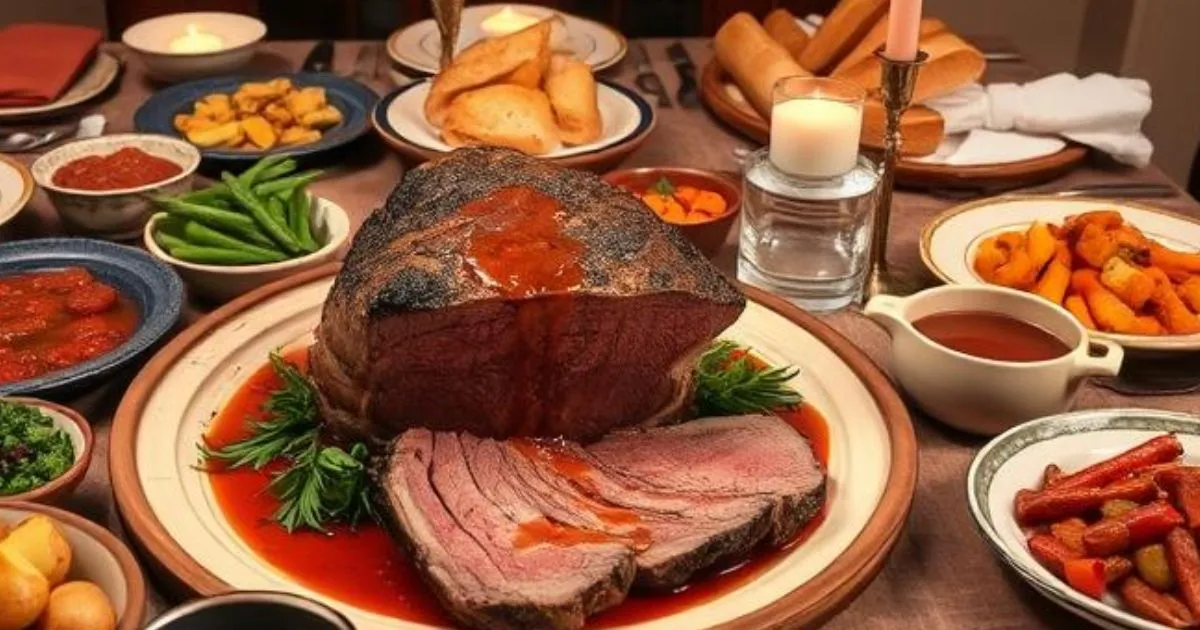How to Cook Venison: A Simple Guide for Tender and Flavorful Meat
Table of Contents
If you’re looking to elevate your cooking game and try something a little more adventurous, venison might just be the perfect choice. Whether you’re an experienced hunter or simply curious about this unique meat, learning how to cook venison properly can unlock a whole new world of flavors. Venison offers a distinctive taste and is much leaner than traditional beef, making it a great alternative to other meats in your kitchen. But, just like any meat, there’s a right way to cook it to ensure it’s tender and flavorful. This guide will walk you through everything you need to know about cooking venison, from the best cuts to how to prepare and cook it to perfection.
What is Venison and Why Should You Try It?
Before we dive into the cooking techniques, let’s take a quick look at what venison is and why it’s such a sought-after meat.
Venison refers to the meat of deer, and it can come from a variety of species, including whitetail, mule deer, elk, and even moose. The meat is naturally leaner than beef, making it a healthier choice for those looking to reduce their fat intake. It also contains high-quality protein and essential nutrients, such as iron and B vitamins, which makes it a great option for your next meal.
But what really makes venison special is its flavor. With its slightly earthy, yet subtly sweet taste, venison offers a unique culinary experience that can’t quite be replicated with beef or pork. The key to enjoying venison is ensuring it’s cooked properly to highlight its rich, natural flavors without making it too gamey or tough.
Understanding the Different Cuts of Venison
Not all venison cuts are created equal, and knowing which one to choose can make all the difference in your meal. Below are some of the most popular cuts of venison and how best to cook them.
1. Venison Steaks (Loin, Tenderloin, and Backstrap)
Venison steaks are perhaps the most tender cuts, coming from the loin, tenderloin, and backstrap of the deer. These cuts are culminate for barbecuing, pan-searing, or broiling.
- Best Cooking Methods: Grilling, pan-searing, or broiling.
- Cooking Time: These cuts cook quickly, so be sure not to overcook them. For medium-rare, point for an inner temperature of around 130-135°F (54-57°C).
2. Venison Roast (Shoulder and Leg)
For a larger, more flavorful cut, venison roast from the shoulder or leg is an excellent choice. These cuts are tougher, which means they benefit from slow cooking methods like roasting or braising.
- Best Cooking Methods: Slow roasting, braising, or slow cooking.
- Cooking Time: Depending on the cut, these roasts will need 2-3 hours to become tender.
3. Venison Ground Meat
Venison ground meat is versatile and can be used in a variety of dishes, from burgers to chili to meatballs.
- Best Cooking Methods: Sautéing, frying, or simmering.
- Cooking Time: Ground venison cooks relatively quickly, typically in 10-15 minutes.
Essential Preparation Tips for Cooking Venison
To ensure your venison turns out as tender and flavorful as possible, proper preparation is key. Here’s what you require to keep in mind:
1. Marinating Venison
Venison can have a slightly gamey taste, so marinating is a great way to balance the flavor and help tenderize the meat.
- Why Marinate? Marinating helps break down the muscle fibers, making the meat more tender. It also infuses the venison with flavors that complement its unique taste.
- Best Marinade Ingredients: Use a combination of acidic ingredients (like vinegar or citrus), herbs (such as rosemary or thyme), and a little oil. You can also add wine or soy sauce for extra depth.
2. Seasoning Venison
While venison has a strong flavor on its own, it pairs well with bold seasonings. Think of flavors like garlic, pepper, juniper berries, and thyme.
- Ideal Spices and Herbs: Venison works well with earthy spices like cumin, cinnamon, or smoked paprika. Don’t shy away from robust herbs such as rosemary, sage, and bay leaves.
- How to Season Evenly: To ensure even seasoning, make sure to rub the spices generously over all sides of the meat before cooking. Allow it to sit for at least 15 minutes for the flavors to meld.
3. Trimming Venison
Venison cuts may come with some tough silver skin, which can be unpleasant to chew. Before cooking, take the time to remove any silvery tissue.
- How to Trim: Use a sharp knife to gently scrape off the silver skin, taking care not to remove too much of the meat.
How to Cook Venison: Step-by-Step
Now that you’re prepared, let’s get into the different ways you can cook venison to perfection.

1. Grilling Venison Steaks
Grilling is one of the best ways to cook venison steaks, as it imparts a delicious smoky flavor while preserving the natural juices.
- Prepping the Grill: Preheat your grill to medium-high heat. If using charcoal, make sure the coals are glowing red. If using gas, set the burners to medium-high.
- Searing: For a perfect sear, season your venison steaks with salt, pepper, and your favorite spices. Sear the steaks for 2-4 minutes per side for a nice crust, depending on thickness.
- Checking Temperature: For medium-rare venison, the internal temperature should reach 130-135°F (54-57°C). Use a meat thermometer for precise results.
- Resting the Meat: Let the steak rest for 5-10 minutes before serving to allow the juices to redistribute.
2. Roasting Venison
Roasting is a great option for larger cuts of venison, such as the shoulder or leg.
- Prepping the Cook: Preheat your broiler to 325°F (163°C). Season the roast with olive oil, salt, pepper, garlic, and rosemary, then place it in a roasting pan.
- Cooking Time: Roast the venison for about 2-3 hours, depending on the size of the cut. Point for an inner temperature of 145°F (63°C) for medium-rare.
- Resting: Permit the broil to rest for 15-20 minutes some time recently carving.
3. Pan-Searing Venison Steaks
Pan-searing is a quick and easy way to cook venison steaks without a grill.
- Preheat the Container: Warm a overwhelming skillet (ideally cast press) over medium-high heat. Add a small amount of oil.
- Cooking Time: Sear the steaks for 2-4 minutes per side. Use tongs to flip the steak carefully. Keep an eye on the inside temperature to maintain a strategic distance from overcooking.
- Adding Flavor: Once the steaks are seared, you can add a tablespoon of butter, garlic, and fresh thyme for extra flavor.
4. Slow Cooking Venison
For tougher cuts like the shoulder or leg, slow cooking is the way to go.
- Prepping the Slow Cooker: Season the venison generously and place it in the slow cooker. Add vegetables, broth, and a little wine for flavor.
- Cooking Time: Set the slow cooker on low for 6-8 hours or on high for 4 hours until the venison is fork-tender.

Common Mistakes to Avoid When Cooking Venison
Venison can be tricky to cook, especially if you’re new to it. Here are some common mistakes to avoid:
- Overcooking: Venison should not be cooked like beef. Because it’s lean, it can become tough and dry if overcooked. Always monitor the internal temperature closely.
- Skipping the Resting Period: Don’t skip the step of letting the meat rest. Resting helps the juices redistribute, keeping the venison tender and juicy.
- Not Marinating: If you skip marinating, you might miss out on enhancing the flavor and tenderness. Always marinate venison, especially for tougher cuts.
Conclusion: Enjoy Your Perfectly Cooked Venison
Cooking venison doesn’t have to be intimidating. By following these tips and techniques, you can create a tender, flavorful meal that will impress your guests and elevate your culinary skills. Whether you’re grilling a venison steak or slow cooking a roast, the key is to take your time, season properly, and monitor the internal temperature.

